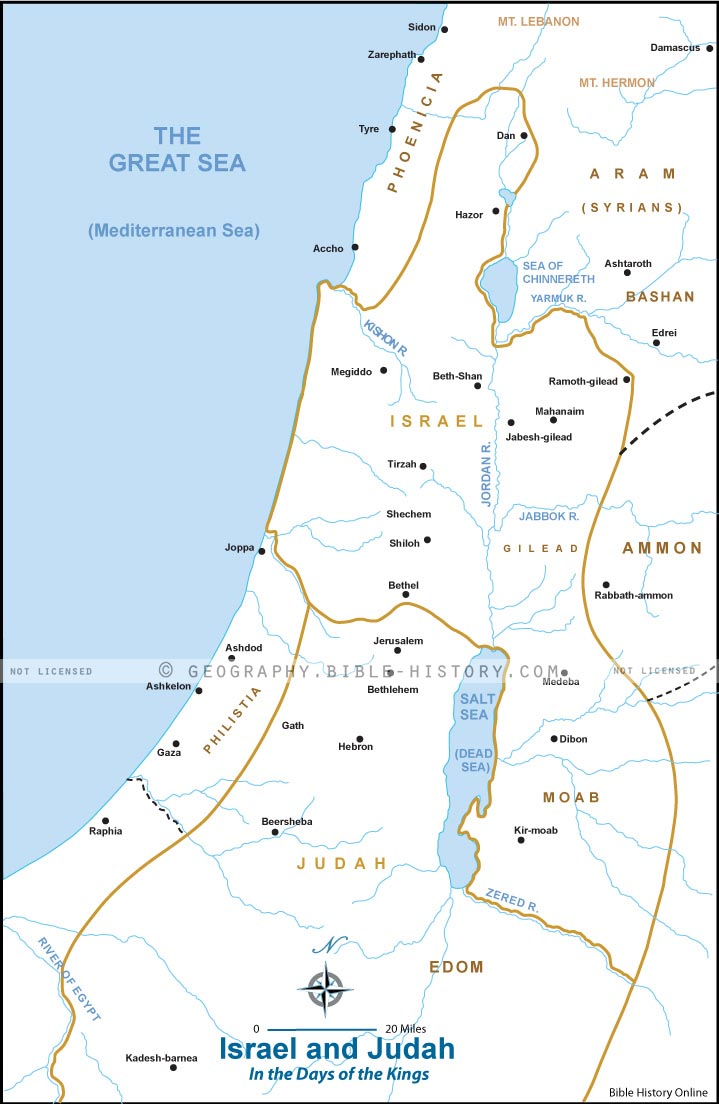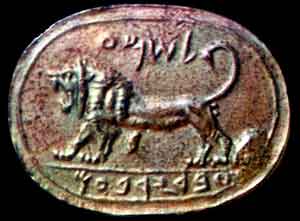2 Chronicles 25 Background Information with Maps and Images (Picture Study Bible - 2 Chronicles) Free Bible Online
2 Chronicles 25
Select a Chapter
-
2 Chronicles 1 |
2 Chronicles 2 |
2 Chronicles 3 |
2 Chronicles 4 |
2 Chronicles 5 |
2 Chronicles 6 |
2 Chronicles 7 |
2 Chronicles 8 |
2 Chronicles 9 |
2 Chronicles 10 |
2 Chronicles 11 |
2 Chronicles 12 |
2 Chronicles 13 |
2 Chronicles 14 |
2 Chronicles 15 |
2 Chronicles 16 |
2 Chronicles 17 |
2 Chronicles 18 |
2 Chronicles 19 |
2 Chronicles 20 |
2 Chronicles 21 |
2 Chronicles 22 |
2 Chronicles 23 |
2 Chronicles 24 |
2 Chronicles 25 |
2 Chronicles 26 |
2 Chronicles 27 |
2 Chronicles 28 |
2 Chronicles 29 |
2 Chronicles 30 |
2 Chronicles 31 |
2 Chronicles 32 |
2 Chronicles 33 |
2 Chronicles 34 |
2 Chronicles 35 |
2 Chronicles 36 |
Select a Book of the Bible
-
Genesis |
Exodus |
Leviticus |
Numbers |
Deuteronomy |
Joshua |
Judges |
Ruth |
1 Samuel |
2 Samuel |
1 Kings |
2 Kings |
1 Chronicles |
2 Chronicles |
Ezra |
Nehemiah |
Esther |
Job |
Psalms |
Proverbs |
Ecclesiastes |
Song of Solomon |
Isaiah |
Jeremiah |
Lamentations |
Ezekiel |
Daniel |
Hosea |
Joel |
Amos |
Obadiah |
Jonah |
Micah |
Nahum |
Habakkuk |
Zephaniah |
Haggai |
Zechariah |
Malachi |
Matthew |
Mark |
Luke |
John |
Acts |
Romans |
1 Corinthians |
2 Corinthians |
Galatians |
Ephesians |
Philippians |
Colossians |
1 Thessalonians |
2 Thessalonians |
1 Timothy |
2 Timothy |
Titus |
Philemon |
Hebrews |
James |
1 Peter |
2 Peter |
1 John |
2 John |
3 John |
Jude |
Revelation |
The Books of 2 Chronicles
2 Chr 36:15 - And the LORD God of their fathers sent to them
by his messengers, rising up betimes, and sending; because he
had compassion on his people, and on his dwelling place:
2 Chr 36:16 - But they mocked the messengers of God, and
despised his words, and misused his prophets, until the wrath of
the LORD arose against his people, till [there was] no remedy.
2 Chr 36:17 - Therefore he brought upon them the king of the
Chaldees, who slew their young men with the sword in the house
of their sanctuary, and had no compassion upon young man or
maiden, old man, or him that stooped for age: he gave [them] all
into his hand.
2 Chr 36:18 - And all the vessels of the house of God, great
and small, and the treasures of the house of the LORD, and the
treasures of the king, and of his princes; all [these] he
brought to Babylon.
2 Chr 36:19 - And they burnt the house of God, and brake
down the wall of Jerusalem, and burnt all the palaces thereof
with fire, and destroyed all the goodly vessels thereof.
The Old Testament - A Brief Overview
Bible Survey - Chronicles
Hebrew Name - Divrei Hayamim "Words of the Days"
Greek Name - Paralipomenon
(Greek form of the Hebrew)
Author - Ezra (According to Tradition)
Date - From 4004-536 BC Approximately
Theme of 1 Chronicles - The reign of King David
Theme of 2 Chronicles - The history of the Southern Kingdom of Judah
Types and Shadows - In Chronicles Jesus is the builder of the house of God
The Seal of Megiddo
This oval shaped jasper seal reveals the name of one of the Hebrew kings, Jeroboam. The seal was discovered in 1904 during the earliest excavation of Megiddo. This was a seal belonging to a royal minister in the 8th century BC. It is engraved with the figure of a roaring lion (symbol of the kingdom of Judah) with a beautiful curved tail and was skillfully executed. The inscription reads "Shema" on top, and "Servant of Jeroboam" on the bottom.
Summary of The Books of Chronicles
The English version of the Bible places the books of Chronicles after Kings, but in the Hebrew text they are placed at the very end of the Old Testament. (See this chart of Old Testament books in Hebrew order). The books of Chronicles were originally one book, as in the case of Samuel and Kings. The Hebrew title is translated the "words of the days", yet the word Chronicles is mainly adopted by a theologian named Jerome who thought that they ought to bear the title from the Greek word for time which is "Chronos". This title created a distraction from the true meaning and purpose of this wonderful book. The main purpose of Chronicles was to form a genealogical description of the 12 tribes of Israel from the earliest recorded time. This was very important considering that there was a mixed multitude that had returned from Babylon, and it was also important to determine the lineage of Judah, and to reestablish the functions and order in which each individual tribe was required to perform.
The author of Chronicles has a fervent desire to make the people of Israel aware of the true glory of their kingdom, realizing that it traces back to David and Solomon. There is nothing that would impress upon them a greater understanding than taking them back through a detailed history of their kingdom, with all of its glory and prosperity and also the horrible sin that led to the captivity and the downfall of the theocracy. The author of Chronicles had a constant focus on the Temple which had been destroyed and the dynasty of King David. There is hardly any mention of the northern kingdom of Israel, it is mainly concerned with Judah and the events in connection with King David, and the building of the Temple. Solomon is not necessarily a huge focus other than his preparations for building the Temple and its dedication. The worship of the Temple is paramount and the functions of the Levites as well. The Kings of Judah are stressed with great importance as well as the idolatry that seduced the people of God.
Hebrew tradition credits Ezra has the author of the books of Chronicles, in the beginning of the books trace the genealogical records all the way back to Adam which took place in approximately 4004 BC. The book concludes with the Jews in Babylon after the captivity.
Quick Reference Map

Map of the Empires of David and
Solomon (Click to Enlarge)
The contents of the books of Chronicles may be outlined as follows:
Outline of the Books of Chronicles
1 Chronicles
I. Genealogical Matters (1 Chronicles 1-9) These genealogies begin with Adam (1
Chronicles 1:1) and are
brought up to the time of the writer (1 Chronicles 9). It is surprising to note the
large number of historical incidents mentioned in connection with the
individuals named in these lists. Many of these are taken from other Old
Testament scripture, but some find their origin elsewhere (1 Chronicles 4:9, 10, 38-43).
II. The Reign of David (1 Chronicles 10 -29)
1) The last days and death of Saul and the early reign of David (1 Chronicles 10-12).
2) The return of the ark to Jerusalem (1 Chronicles 13-16). Included in this section is the
account of the misfortune of Uzzah, who was killed when he reached forth to save
the ark from falling (1 Chronicles 13).
3) David purposes to build the temple but is forbidden because of the great
amount of bloodshed to which he has been a party (1 Chronicles 17).
4) The account of David's conquests (1 Chronicles 18-20).
5) The census and the plague (1 Chronicles 21).
6) David's preparations for building the temple (1 Chronicles 22). Although David was
himself forbidden to build a temple for God, he set about to collect the
necessary materials for such a temple, that the task of his son Solomon might be
easier.
7) Designation of the duties of the Levites (1 Chronicles 23).
8) Organization of the government (1 Chronicles 24).
9) David's last words and his death (1 Chronicles 28-29).
2 Chronicles
III. The Reign of Solomon (2 Chronicles 1-9) This section includes the further preparation,
the building and the dedication of the Temple, as well as various other
activities of Solomon.
IV. The History of Judah to Its Fall (2 Chronicles 10 -36)
1) The revolt of the ten tribes and the reign of Rehoboam (2 Chronicles 10-12).
2) The reign of Abijah (2 Chronicles 13).
3) The reign of Asa (2 Chronicles 14-16). This was a period of prosperity in Judah as Asa
instituted a number of moral and religious reforms, establishing himself as a
servant of the Lord.
4) The reign of Jehoshaphat (2 Chronicles 17-20). This king was also diligent in his efforts
to serve God. He made considerable efforts to acquaint his people with the Law.
5) The reigns of Jehoram and Ahaziah (2 Chronicles 21:1�22:9).
6) The reign of Athaliah, the only queen of Judah (2 Chronicles 22:10-23:21).
7) The reign of Joash (2 Chronicles 24). Ascending to the throne at the age of seven,
Joash, advised by the high priest Jehoida, brought about the restoration of true
worship. After Jehoida's death, however, Joash himself slipped into the worship
of idols.
8) Amaziah, Uzziah, Jotham and Ahaz (2 Chronicles 25-28).
9) The reign of Hezekiah (2 Chronicles 29-32). After beginning his rule with a great
religious restoration, Hezekiah helped his nation to regain a measure of power
and glory.
10) Manasseh and Amon (2 Chronicles 33).
11) The reign of Josiah (2 Chronicles 34-35). In the eighteenth year of a reign that began
when he was only eight years old, Josiah began the most sweeping religious
reforms which Judah had ever known. During the renovation of the temple, the
"book of the Law" was found, encouraging the people greatly in this time of
revival.
12) The last days of Judah (2 Chronicles 36). After a brief reign by Jehoahaz, the throne
was taken by Jehoiakim, who reigned for eleven years. During this period he was
a vassal alternatively to Egypt and Babylon. In an effort to revolt against the
Babylonian rule, he lost his life. He was succeeded by Jehoiachin, who reigned
only three months, after which he was carried to Babylon, where he lived a
number of years. The last of the Judean kings was Zedekiah. Nebuchadnezzar had
already plundered Jerusalem of much of its treasures and a considerable number
of its most promising men. This took place in two raids, in 606 and 597 BC. In
586 BC, during the reign of Zedekiah, the Babylonians struck once again, this
time leaving none but the poorest class of people to remain in Jerusalem. Five
years later, the Babylonians came to collect about 750 more captives, even after
a number, including Jeremiah, had fled to Egypt (Jeremiah 43).
Quick Reference Maps - 2 Chronicles
The Empire of David and Solomon during the Chronicles
Israel and Judah - The kingdoms of Israel and Judah during the period of the kings can be seen on this map. After Solomon had died there was a civil war and 10 tribes took to the north and were called the northern kingdom of Israel, and every king was evil and forsook the LORD. The remaining 2 tribes stayed in the south and were called the southern kingdom of Judah, several of those kings trusted in the LORD.
Mesha's Kingdom - The Bible reveals that Mesha, the king of Moab rebelled against Jehoram the king of Israel (2 Kings 3:4-5). Jehoram requested the help of Judah and Jehoshaphat allied with him, he sought Elisha the prophet and victory was predicted, only because of the faith of Jehoshaphat. Mesha sought the god Chemosh and sacrificed his own son (2 Kings 3:27).
Israel and Syria Naaman the leper, captain of the Syrian army was healed by a miracle at the command of Elisha the prophet (2 Kings 5). At that time Aram (Syria) was a dominant fighting machine in the north under the leadership of Ben-Hadad, who was later murdered by Hazael (2 Kings 8:15).
Syria at Its Height - 2 Kings 10 reveals that Hazael of Syria smote all the coasts of Israel and the east Jordan territory expanding the kingdom of Damascus. Jehu knew that he would need to rely on a foreign power for help and he turned to Shalmanessar IV, King of Assyria.
The Kingdom of Jeroboam II - 2 Kings 14:25 indicates that Jeroboam II, fourth king from the line of Jehu, brought the northern kingdom of Israel to its greatest extent in the north. This was just after Syria was severely crushed by the Assyrians who had recently returned home to regroup.
Habor, the River of Gozan - In 2 Kings 17:6 the Bible says that the King of Assyria (Sargon II) conquered Samaria and took away the remaining inhabitants of Israel as prisoners to Assyria, and placed them in Halah and in Habor by the river of Gorzan, and in the cities of the Medes. The river of Gorzan is identified as the river Khabur, a tributary of the Euphrates river which flows into it from the north from southern Turkey.
The Cities of Samaria and the Surrounding Lands - The Bible records in second Kings 17:24 that the King of Assyria (Sargon II) brought colonists from many of the cities within the Assyrian Empire: Babylon, Cuthah, Ava, Hamath, and from Sepharvaim, and placed the inhabitants within the cities of Samaria to replace the children of Israel who would been taken into captivity.
The Assyrian Empire When Sennacherib Came to Power - Israel was destroyed, Judah was left and Hezekiah a man who sought the LORD had come to power in 720 BC. He offered tribute to Sennacherib but Jerusalem was was still a target for the Assyrian ruler.
The Assyrian Empire During the Reign of Esarhaddon - Esarhaddon marches into Egypt and extends the Assyrian Empire. 2 Kings 19
Necho Battles Josiah - Pharaoh Necho on his way to the Euphrates slays King Josiah at Megiddo. 2 Kings 23
The Captivity of the Ten Tribes - The ten tribes in the northern kingdom of Israel were conquered by the Assyrians in 722 BC and taken to the land of Assyria as captives.
Judah Captives in Babylon - The remaining remnant of Judah were taken as prisoners to Babylon as predicted by Jeremiah the prophet.
The Babylonian, Mede and Persian Empires - Pharaoh Necho is defeated by Nebuchadnezzar II of Babylon who also destroyed Jerusalem in 586 BC. Later the Mede and Persian Empires defeated Babylon and governed the world in the sixth century BC until Alexander the Great.
2 Chronicles Resources
Saul,
Israel's First King
King
David
King
Solomon
The Divided Kingdom
The
Northern Kingdom of Israel
The
Southern Kingdom of Judah
The Assyrian Captivity
The Babylonian Captivity
More About the Book of
1 Chronicles
More About the Book of
2 Chronicles
1
Chronicles in the Picture
Study Bible
2
Chronicles in the Picture
Study Bible
Timeline of the Ancient
World
Back to the Old Testament
Back to Bible
History Online
Bibliography Information
Free Bible Online - Picture Study Bible, King James Version. New York: American Bible Society: www.free-bible.com, 1995-2013. Bible History Picture Study Bible. Nov 05, 2024.
- King James Bible Home
- Free Bible Home Page
- Bible Encyclopedia (ISBE)
- Online Bible (KJV)
- Naves Topical Bible
- Smith's Bible Dictionary
- Easton's Bible Dictionary
- Fausset's Bible Dictionary
- Matthew Henry Bible Commentary
- Hitchcock's Bible Dictionary
Read The Bible
- 1599 Geneva Bible (GNV)
- 21st Century King James Version (KJ21)
- American Standard Version (ASV)
- Amplified Bible (AMP)
- Amplified Bible, Classic Edition (AMPC)
- Authorized (King James) Version (AKJV)
- BRG Bible (BRG)
- Christian Standard Bible (CSB)
- Common English Bible (CEB)
- Complete Jewish Bible (CJB)
- Contemporary English Version (CEV)
- Darby Translation (DARBY)
- Disciples’ Literal New Testament (DLNT)
- Douay-Rheims 1899 American Edition (DRA)
- Easy-to-Read Version (ERV)
- English Standard Version (ESV)
- English Standard Version Anglicised (ESVUK)
- Evangelical Heritage Version (EHV)
- Expanded Bible (EXB)
- GOD’S WORD Translation (GW)
- Good News Translation (GNT)
- Holman Christian Standard Bible (HCSB)
- International Children’s Bible (ICB)
- International Standard Version (ISV)
- J.B. Phillips New Testament (PHILLIPS)
- Jubilee Bible 2000 (JUB)
- King James Version (KJV)
- Lexham English Bible (LEB)
- Living Bible (TLB)
- Modern English Version (MEV)
- Mounce Reverse Interlinear New Testament (MOUNCE)
- Names of God Bible (NOG)
- New American Bible (Revised Edition) (NABRE)
- New American Standard Bible (NASB)
- New American Standard Bible 1995 (NASB1995)
- New Catholic Bible (NCB)
- New Century Version (NCV)
- New English Translation (NET)
- New International Reader's Version (NIRV)
- New International Version - UK (NIVUK)
- New International Version (NIV)
- New King James Version (NKJV)
- New Life Version (NLV)
- New Living Translation (NLT)
- New Matthew Bible (NMB)
- New Revised Standard Version (NRSV)
- New Revised Standard Version Catholic Edition (NRSVCE)
- New Revised Standard Version, Anglicised (NRSVA)
- New Revised Standard Version, Anglicised Catholic Edition (NRSVACE)
- New Testament for Everyone (NTE)
- Orthodox Jewish Bible (OJB)
- Revised Geneva Translation (RGT)
- Revised Standard Version (RSV)
- Revised Standard Version Catholic Edition (RSVCE)
- The Message (MSG)
- The Voice (VOICE)
- Tree of Life Version (TLV)
- World English Bible (WEB)
- Worldwide English (New Testament) (WE)
- Wycliffe Bible (WYC)
- Young's Literal Translation (YLT)
Table of Contents
Main Menu
- Ancient Assyrian Social Structure
- Ancient Babylonia
- Ancient Canaan During the Time of Joshua
- Ancient History Timeline
- Ancient Oil Lamps
- Antonia Fortress
- Archaeology of Ancient Assyria
- Assyria and Bible Prophecy
- Augustus Caesar
- Background Bible Study
- Bible
- Biblical Geography
- Fallen Empires - Archaeological Discoveries and the Bible
- First Century Jerusalem
- Glossary of Latin Words
- Herod Agrippa I
- Herod Antipas
- Herod the Great
- Herod's Temple
- High Priest's in New Testament Times
- Jewish Literature in New Testament Times
- Library collection
- Map of David's Kingdom
- Map of the Divided Kingdom - Israel and Judah
- Map of the Ministry of Jesus
- Matthew Henry Bible Commentary
- Messianic Prophecy
- Nero Caesar Emperor
- Online Bible Maps
- Paul's First Missionary Journey
- Paul's Second Missionary Journey
- Paul's Third Missionary Journey
- Pontius Pilate
- Questions About the Ancient World
- Tabernacle of Ancient Israel
- Tax Collectors in New Testament Times
- The Babylonian Captivity
- The Black Obelisk of Shalmaneser
- The Books of the New Testament
- The Court of the Gentiles
- The Court of the Women in the Temple
- The Destruction of Israel
- The Fall of Judah with Map
- The History Of Rome
- The Incredible Bible
- The Jewish Calendar in Ancient Hebrew History
- The Life of Jesus in Chronological Order
- The Life of Jesus in Harmony
- The Names of God
- The New Testament
- The Old Testament
- The Passion of the Christ
- The Pharisees
- The Sacred Year of Israel in New Testament Times
- The Samaritans
- The Scribes
Ancient Questions
- How did the ancient Greeks and Romans practice medicine and treat illnesses?
- What were the major contributions of ancient Babylon to mathematics and astronomy?
- How did the ancient Persians create and administer their vast empire?
- What were the cultural and artistic achievements of ancient India, particularly during the Gupta Empire?
- How did ancient civilizations like the Incas and Aztecs build their remarkable cities and structures?
- What were the major trade routes and trading practices of the ancient world?
- What was the role of slavery in ancient societies like Rome and Greece?
- How did the ancient Mayans develop their sophisticated calendar system?
- What were the key events and significance of the Battle of Thermopylae in ancient Greece?
- What was life like for women in ancient Rome?
Bible Study Questions
- The Authorized (King James) Version (AKJV): Historical Significance, Translation Methodology, and Lasting Impact
- Exploring the English Standard Version (ESV): Its Aspects, Comparisons, Impact on Biblical Studies, and Church Use
- A Detailed Historical Analysis of Language Updates in the KJ21: Comparison with Other Versions
- A Detailed Historical Analysis of the American Standard Version (ASV): Comparison to the King James Version, Influence on Later Translations, and Evaluation of Strengths and Weaknesses
- A Detailed Historical Analysis of Amplifications in the Amplified Bible (AMP) and Its Comparison to Other Bible Translations
- Detailed Historical Analysis of the Amplified Bible Classic Edition (AMPC): Examples of Amplifications and Comparative Analysis with Other Bible Translations
- Theological Implications of the BRG Bible's Color-Coding System: A Comparative Analysis
- The Christian Standard Bible (CSB): An In-Depth Analysis
- The Geneva Bible: Theological Distinctives, Impact on English Literature, and Role in Bible Translation History
- Exploring the Common English Bible (CEB): Translation Methodology, Church Use, and Comparative Analysis
About
Welcome to Free Bible: Unearthing the Past, Illuminating the Present! Step into a world where ancient history and biblical narratives intertwine, inviting you to explore the rich tapestry of human civilization.
Discover the captivating stories of forgotten empires, delve into the customs and cultures of our ancestors, and witness the remarkable findings unearthed by dedicated archaeologists.
Immerse yourself in a treasure trove of knowledge, where the past comes alive and illuminates our understanding of the present.
Join us on this extraordinary journey through time, where curiosity is rewarded and ancient mysteries await your exploration.
Recent posts
-

Creating a Cozy Living Room
Creating a Cozy Living Room: Interior Design Tips for Comfort and Style The living room serves as the heart of the home—a space where relaxation, en... -

Halloween Mystery Boxes – Professional Tattoo Machines & Accessories by Vlad Blad Irons
This Halloween, Vlad Blad Irons is adding excitement and surprises for tattoo artists with their exclusive Halloween Mystery Boxes! Available only unt... -

Sports, Cybersport, and Betting: A Blend of Ancient Traditions and Modern Thrills
Sports had been a great a part of human records, supplying amusement, competition, or even non secular importance across cultures. Today, the rise of ... -

How to Remove Watermarks from Photos Using DeWatermark.AI
In ultra-modern digital age, pictures play a critical role in private and professional projects. Whether it is for social media, content material crea... -

Ethical Employee Monitoring: Alternatives to Screen Capture for Better Productivity
Screen monitoring has become a crucial component of today’s work environments, especially with remote and hybrid models on the rise. Many companies ...

